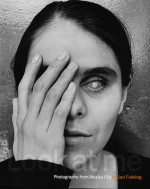Go look at Look at me

Photographer Jed Fielding, whose collection Look at me was published by the University of Chicago Press in March, has a show opening tonight at the Andrea Meislin Gallery in New York City . Writing about the gallery opening, The New Yorker raves:
Fielding’s photographs of the blind children he met at schools in Mexico City are not in the tradition of photojournalistic muckraking. Like his terrific earlier series from the streets of Naples, these images are vivacious, audacious, and in your face. His subjects are not pitiable victims; they’re rambunctious, apparently happy kids at play, responding to Fielding’s attention with curiosity and delight. They may be cut off from the visual world, but they relish physical contact, both with one another and with the patient photographer. The best of the work was made at close range, where that connection was most tangible, and young faces fill the frames with fragile, vivid life.
For those not fortunate enough to be in Manhattan during the show’s run (it’s up through October 17), Fielding’s photographs are available in convenient book form. An in-depth pictorial study of blind schoolchildren in Mexico, Look at me contains more than sixty arresting images from which we often want to look away, but into which we are nevertheless drawn by their deep humanity and palpable tenderness.
Sight is central to the medium of photography. But what happens when the subjects of photographic portraits cannot look back at the photographer or even see their own image? Combining aspects of his earlier, acclaimed street work with an innovative approach to portraiture, Chicago-based photographer Fielding concentrates closely on these children’s features and gestures, probing the enigmatic boundaries between surface and interior, innocence and knowing, beauty and grotesque. Design, composition, and the play of light and shadow are central elements in these photographs, but the images are much more than formal experiments; they confront disability in a way that affirms life. Fielding’s sightless subjects project a vitality that seems to extend beyond the limits of self-consciousness. In collaborative, joyful participation with the children, he has made pictures that reveal essential gestures of absorption and the basic expressions of our creatureliness.
Fielding’s work achieves what only great art, and particularly great portraiture can: it launches and then complicates a process of identification across the barriers that separate us from each other. This is a monograph of uncommon significance by an important American photographer.draws attention to (and distinctions between) the activity of sight and the consciousness of form.